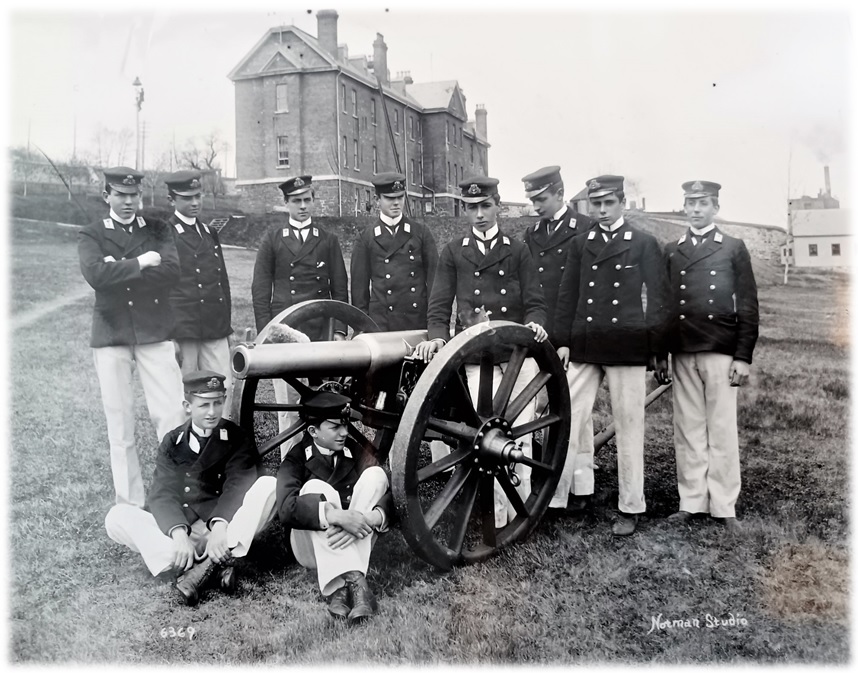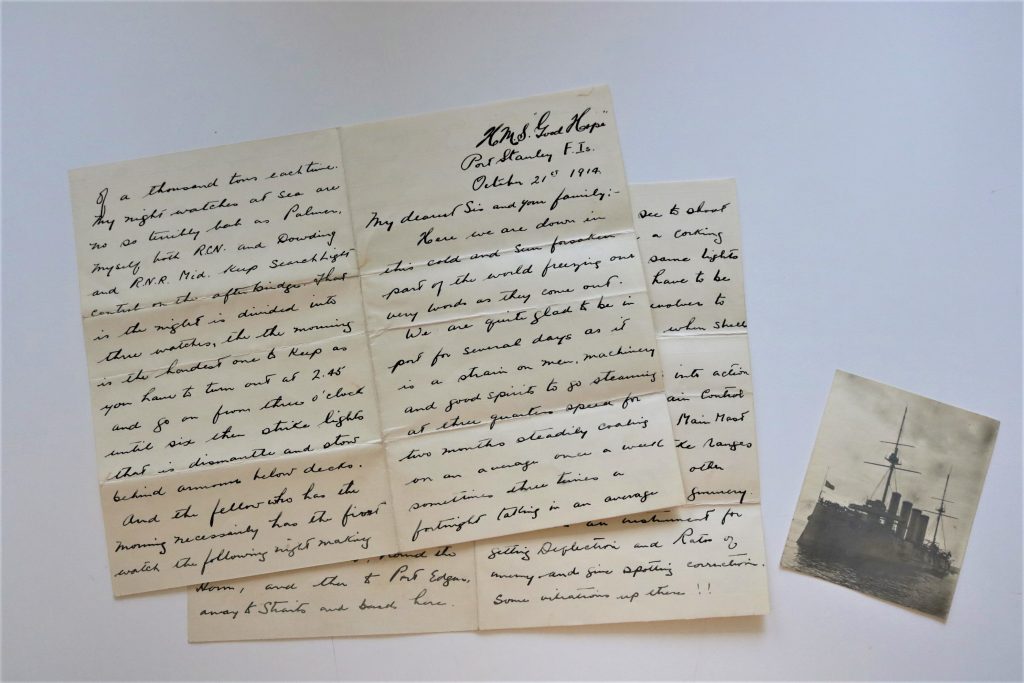
NAVAL MUSEUM OF HALIFAX
The first Canadian casualties of the First World War
By Joanie Veitch,
Trident Staff
While stories of Canadian soldiers on battlefields such as Ypres, Vimy Ridge and Passchendaele loom large, the first Canadian casualties of the First World War were four young midshipmen — all Maritimers and all members of the Royal Canadian Navy.
The four midshipmen — Victor Hatheway, Malcolm Cann, William Palmer and Arthur Silver — died on November 1, 1914, when the Royal Navy ship they were on — His Majesty’s Ship (HMS) Good Hope — went down off the coast of Chile after a battle with a German squadron.
In a presentation held at the Maritime Museum of the Atlantic on November 1, 2022 — the 108th anniversary of their loss — Jennifer Gamble, curator for the Naval Museum of Halifax, talked about the lives of the “bright and promising officers” who joined the Royal Naval College of Canada in 1911 “with dreams of exploring the world”, and the circumstances that led them to die so far from home.

NAVAL MUSEUM OF HALIFAX
The Royal Canadian Navy (RCN) was just one year old when the four young men walked through the doors of the college. They were all young; Hatheway and Cann both 16 years of age, and Palmer and Silver just 17.
Born in Granville, NS, Hatheway had been living in Fredericton, NB before coming to Halifax to attend the naval college. Cann, the son of a merchant ship owner, was from Yarmouth, NS. Silver’s father was Captain Harry St. Clare Silver, a veteran and well-known Halifax businessman. Palmer, who graduated at the top of their class, was born and raised in Halifax and the son of a sergeant-major in the Royal Canadian Engineers.
When the four men graduated as midshipmen on January 25,1913, the struggling RCN had just two Diadem-class cruisers, both former Royal Navy ships. HMCS Rainbow was stationed on the west coast and HMCS Niobe served out of Halifax, although the ship stayed mostly in port for repairs prior to the outbreak of war after it ran aground off Cape Sable in 1911.
Trained aboard the Royal Navy cruiser HMS Berwick — where they earned $2 a day — the four midshipmen were back in Canada when war was declared on August 4, 1914. They all received orders to report to HMCS Niobe at the Halifax Dockyard.
Less than two weeks later, HMS Good Hope sailed into Halifax, changing the course of their young lives.
Part of a squadron along with HMS Monmouth and HMS Suffolk, Good Hope was headed to South America to hunt for a specific German squadron that was sinking allied merchant ships.
Short four midshipmen when it arrived, Palmer and Silver were personally selected by RAdm Cradock to join the Good Hope crew. Cann and Hatheway were chosen by lottery for the two remaining spots.
“Needless to say their former classmates and midshipmen were probably envious of their luck to serve on the flagship of the Royal Navy,” Gamble said.
While at sea, the men wrote letters home, some of which are in the collection at the Naval Museum of Halifax, Gamble added, showing digitized images of the letters written by Hatheway and Cann on a large screen as part of her presentation.
On November 1, 1914, Good Hope was patrolling off the coast of Coronel, Chile, when it met up with the German squadron.
Outgunned by the Germans, both HMS Good Hope and Monmouth were lost. More than 1,500 died — including the four young midshipmen from Nova Scotia — becoming the first Canadian casualties of the First World War and the first members of the RCN to die in service.
“It was described at the time as one of the worst defeats for the Royal Navy in a century. It was a massive shock for the Royal Navy, the Royal Canadian Navy and all allied navies,” said Gamble.
Word was slow to reach Halifax. On November 5, the Halifax Herald reported rumours of a battle off the coast of Chile, and two days later, they reported Good Hope was lost with all hands, including the four young midshipmen.
“It wasn’t until the end of November that the families received official notice from Ottawa of their deaths,” said Gamble, showing a digitized image of the letter sent to Hatheway’s family.
More than 60,000 Canadians died during the First World War, and another 172,000 were wounded. The RCN reported 150 deaths, including the four young midshipmen from Nova Scotia.
Memorial plaques were issued to the families of the dead military members. The museum has Hatheway’s, Cann’s, and Palmer’s plaques as part of its collection.
“They made the ultimate sacrifice,” Gamble said.






